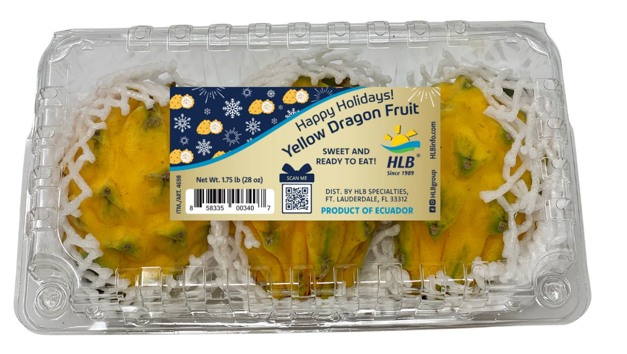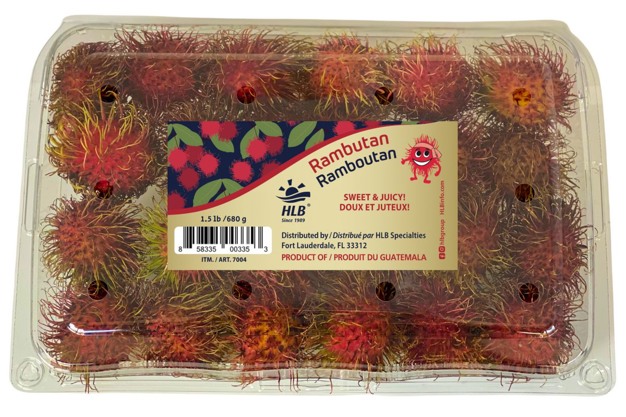Summer is almost a contradictory time of year for tropical and exotic fruit. Supply is ample, but demand suffers from competition with local crops like stone fruit, cherries, and watermelons. In summer, consumers gravitate towards items that are lower priced and available for a limited time. "It is tough to compete with local items and we certainly lose shelf space in summer," says Andrés Ocampo with HLB Specialties. "Labor Day usually signifies the end of summer and that's when our tropical and exotic items become more desirable and we gain our shelf space back," he added. "We fill in the gaps that seasonal items leave when they disappear from the shelves."
"Ironically enough, the moment we start gaining shelf space is also the time when the seasons of many of our tropical and exotic items finish." Yellow dragon fruit for instance is finishing now and will be back on the shelves in November. The season for Mexican lychees ended a month ago and won't start up until next year. However, South Africa is able to fill in part of the lychee gap in December, January, and February.

HLB customized packaging that is geared toward the holiday season. In January, the label switches to Lunar New Year with a specialized logo for each Lunar Year.
While the selection of exotic items is smaller in the fall, they definitely receive more attention from retailers and consumers. That's due to additional shelf space becoming available, but also because exotic fruits remind people of warm summer days. One of the items available in fall is mangosteen. The season for Mexico grown mangosteen is in its final stretch and will continue through the end of September.
Rambutan
An item that is available throughout the entire fall season is rambutan. They are sourced in Guatemala and Honduras and depending on weather events, rambutan is usually available until December, and sometimes into January and February. Guatemala suffered from unseasonably high temperatures in April and May, which made for a difficult first few weeks of the season. "Fortunately, the conditions have improved since July and quality as well as shelf-space have been good. Weather dependent, we expect this situation of good quality to continue," said Ocampo. Honduras entered the season a few months after Guatemala and has been less affected by hot weather.

Guava
Guava from Mexico is also a popular fall item. It is available year-round, but quality stands out in the fall as the plants are less stressed from hot weather conditions. "It's the better producing regions that are in season in the fall." Guava has been impacted by limited water supply earlier in the season and the lack of water has prevented growers from irrigating properly. This is expected to negatively affect production volume later in the year. While the quality of guava is improving due to recent rainfall, production may be lower in the 4th quarter. "Lower volumes are expected to create a very tight supply situation as the domestic market in Mexico typically sees high demand for guava in December. Guava juice is a traditional drink around the holidays and low output in combination with high demand may significantly reduce the availability of product for exports."

Left: baby guava in clamshell. Right: mangosteen.
 For more information:
For more information:
Andrés Ocampo
HLB Specialties
Tel: (+1) 954-475-8808
[email protected]
www.hlbspec.com










